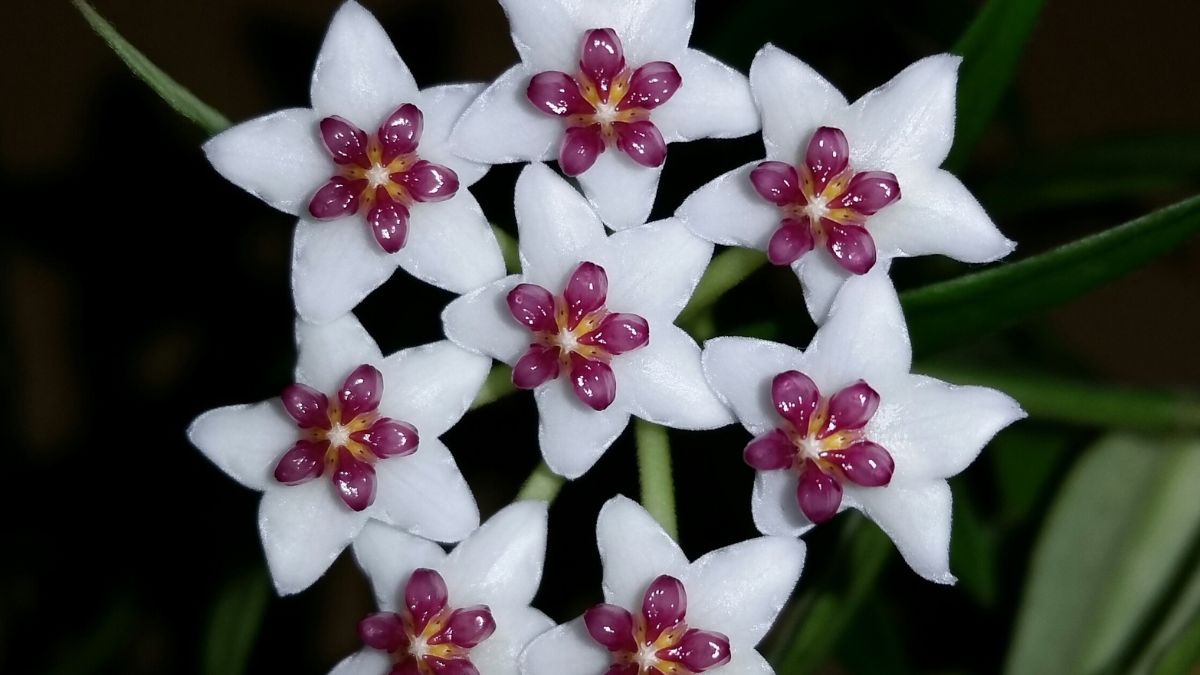Introduction
Waxvine, or more colloquially, common waxflower, Hoya australis, is a well-liked Hoya species. Its native range extends from Western Australia to northern New South Wales, where it is commonly found in rocky habitats along rainforest edges. In this post, we’ll dig into the fascinating world of Hoya australis and learn about its special qualities, how to grow it so that it produces fragrant blooms, how beneficial it is to gardeners, and a sampling of the several variations it comes in.
Physical Characteristics
Hoya australis is highly sought after by green-thumbs because of its unique morphological characteristics. The lengths to which this vine may extend are quite remarkable given its characteristically thin and twining stems. Horticulturist favorites for its beautiful green foliage and adaptability to indoor and outdoor environments. Hoya australis is pest-resistant because its leaves are waxy and glossy. In addition, the heart- or oval-shaped leaves provide a sophisticated touch to any landscape. The vine’s growth habits are considered moderate, making it an excellent choice for containers and trellises.
Cultivation
Growing Hoya australis may be gratifying for gardeners of all skill levels. It is adaptable to many climates, but does best in the subtropical and tropical regions. It thrives in strong, indirect sunshine, making it a good option for individuals with restricted access to outdoor places when cultivated indoors.
Maintaining a Hoya australis requires steady attention. This vine will thrive with regular watering, adequate drainage, and light feedings once in a while. Pruning is a great way to manage its growth and keep it looking nice. If you live somewhere that gets really cold in the winter, you should probably move your plant inside for the season.
Fragrant Flowers
The fragrant blossoms of the Hoya australis are one of the plant’s most alluring features. These flowers are light and star-shaped, and they like to grow in large groups that are quite beautiful. Their pleasant, seductive scent is a plus for gardeners who want to provide a more multisensory experience for visitors to their gardens.
Hoya australis, with its sweetly scented blossoms, can be used as a fragrant garden accent. They are aesthetically pleasing, but they also serve a practical purpose by drawing in pollinators like bees and butterflies. Hoya australis is a popular flower because of its stunning appearance and usefulness.
Benefits of Growing Hoya australis
Hoya australis provides more than only visual and aromatic benefits to gardeners.
Aesthetic Value:
The combination of the fragrant blossoms and the lush, beautiful leaves gives indoor and outdoor landscapes a special allure.
Environmental Benefits:
Australis is beneficial to the ecosystem because it serves as a magnet for pollinators such as bees and butterflies.
Attracting Wildlife:
Australis is an excellent plant for attracting butterflies and hummingbirds, two of the most prized visitors to any garden.
Unique Varieties of Hoya Australis
While there are a number of different Hoya australis cultivars available, all of them are beautiful additions to any garden. Some of these variants have noticeable differences, such as colored flowers or striped leaves. If you’re looking to make your garden more unique and visually interesting, this is a great place to start.
Conclusion
The common waxflower, sometimes known as the waxvine, is really a species of Hoya australis. Any garden, indoors or out, would benefit from having it because to its rich foliage, appealing smell, and contribution to the ecology. Hoya australis is a stunning plant that may be enjoyed for years to come with proper care and attention to the plant’s various variants.
FAQs
1. Can I grow this plant australis indoors?
Indirect, bright sunshine is ideal for flower australis’ indoor growth.
2. What is the best time to prune flower australis?
If you want your australis to stay looking nice and under control, prune it in the spring.
3. Do this australis flowers attract bees and butterflies?
Australis’ fragrant blooms are a magnet for pollinators like bees and butterflies, which means they’ll increase the variety of insects in your garden.
4. Is flower australis suitable for beginners in gardening?
This australis is ideal for new gardeners since it requires little attention.
5. How do I care for unique varieties of this flower australis?
Unique variants require the same general care as australis, but you should learn as much as possible about the requirements and traits of the individual variety you’re growing.









